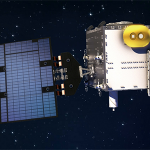GOES-U will provide imagery and atmospheric measurements of the Western Hemisphere, real-time mapping of lightning activity, and monitoring of solar activity and space weather.
 L3Harris Technologies has successfully integrated its fourth Advanced Baseline Imager (ABI) into National Oceanic and Atmospheric Administrations (NOAA) GOES-U satellite, completing the series of advanced weather sensors for the GOES programme, slated to launch in 2024.
L3Harris Technologies has successfully integrated its fourth Advanced Baseline Imager (ABI) into National Oceanic and Atmospheric Administrations (NOAA) GOES-U satellite, completing the series of advanced weather sensors for the GOES programme, slated to launch in 2024.
The ABIs onboard the GOES series of satellites provide revolutionary technology by advancing weather observation and environmental monitoring services, and also by providing more advanced notice of fires, hurricanes, tornadoes and floods. The ABI provides high-resolution video of weather and environmental systems using 16 spectral bands. L3Harris said the ABI can achieve resolution four times greater and five times faster than the previous generation of GOES satellites.
For nearly 60 years, L3Harris has developed and launched solutions that further improve the accuracy of weather forecasts, measure climate change and increase life-saving warning times.
The third ABI is onboard NOAAs GOES-T satellite, scheduled to launch on March 1, 2022. GOES satellites are under command and control of the L3Harris-built enterprise ground system.















































































